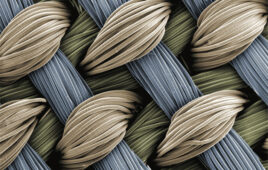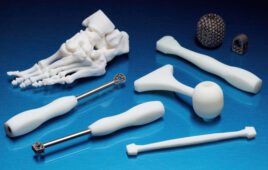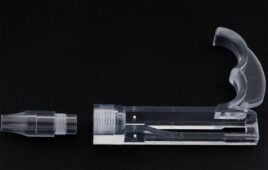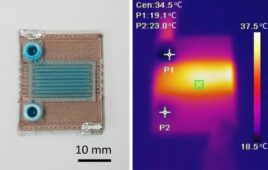By Brian Ray, CEO of Ray Products, Inc.

Photo Credit: Sotheby’s
About 5,000 years ago, Egypt was ruled by pharaohs. And those pharaohs occasionally liked to eat things with spoons. Of course, pharaohs were far too fancy to eat with clay or stone or wooden spoons like the average commoner. So, an unnamed ancient Egyptian developed a technique to soften beautiful tortoise shells in hot oil and bend them into the shape of spoons.
Today, some 3D printers are using more or less the same technique to ramp up their manufacturing quantity and to control costs.
Oh don’t worry, there’s no need to alert PETA. Today, they’re using sheets of plastic instead of tortoise sheets, and the process is called thermoforming.
And for a wave of makers, manufacturers and designers, it might be the next big thing. “Thermoforming might be the oldest plastic manufacturing process in the world,” says Brian Ray, president of Ray Products, a thermoformer in Ontario, CA.
After the ancient Egyptians, other cultures refined the technique. Then it hit the big time during World War II when it was used to make everything from canopies in fighter planes to topographic relief maps.
But step inside a modern thermoforming factory, and nothing looks ancient, or even WWII-era retro. Large, automated industrial machinery takes flat sheets of plastic, heats them until they’re pliable and then uses a vacuum and pressure to mold them into custom shapes. Next, the formed sheets are cooled and trimmed by advanced 6 – axis robotic trimmers.
So why is it suddenly so popular with makers, manufacturers and designers?
“When it comes to moving from a 3D-printed prototype to a larger production run, thermoforming can offer high quality, with much, much lower startup costs,” said Ray.
In fact, making a thermoforming mold can be 90% cheaper than creating a similar-sized injection-molding mold.
Say you’ve invented an amazing solar powered internet-connected air conditioner. You’ve 3D printed a couple of prototypes, and you’re ready to launch your hotly anticipated Kickstarter to ramp up production.
When you go to quote the cost of making 1,000 plastic solar powered internet-connected air conditioner enclosures, you learn that injection molding would cost $30,000 just to make the mold. Thermoforming could offer the same, or even better, quality for 1/10th the startup cost.
“If you’re making 1,000, 2,000 or 3,000 of something, there’s a good chance that thermoforming is going to be very cost effective,” said Ray.
At higher quantities, say, above a few thousand parts, injection molding’s lower per-part costs could make up the difference. But with larger parts or frequent design changes, that might never happen.
“If you think of going from 3D printing to injection molding, you have to make a huge quantity of something to break even,” said Ray. “With thermoforming, you can make a few hundred, or a few thousand, and still have a successful project.”
Not bad for a technology that was first developed alongside the pyramids.




